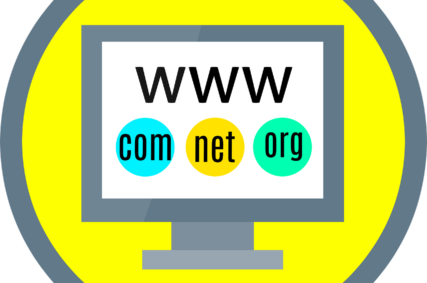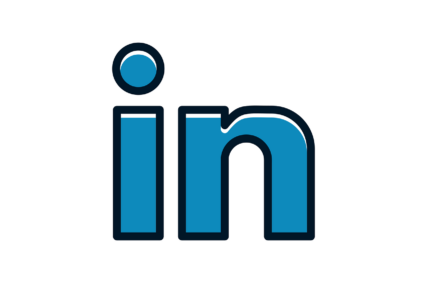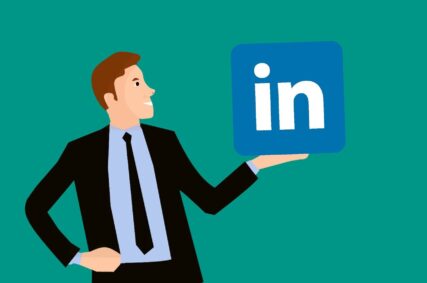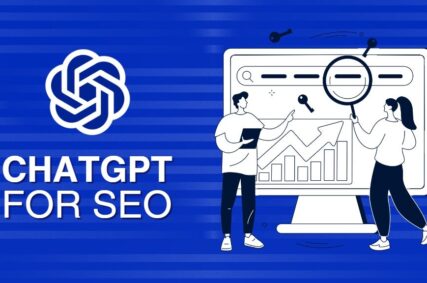Investing in LinkedIn ads can be a valuable decision for your business, but it’s essential to weigh the potential benefits against the costs. With a user base of more than 774 million professionals, LinkedIn advertising offers the opportunity to target specific audiences, generate leads, and promote brand visibility.
One key consideration is the cost involved. On average, the cost per click on a LinkedIn ad is around $5.26, making it more expensive compared to other social media platforms. Despite the higher cost, some businesses find success with LinkedIn ads, particularly those offering high-ticket products or services. It’s crucial to evaluate the return on investment (ROI) of your LinkedIn advertising campaigns to determine if the costs align with your business goals.
In addition to the costs, it’s important to consider factors such as audience targeting and the types of ads that suit your business needs. LinkedIn provides powerful targeting tools, including industry, job title, company size, and geolocation, which can facilitate precise ad targeting. This level of targeting can lead to better-quality leads and improved conversion rates. Understanding the types of LinkedIn ads available and selecting the most effective format for your ad will also contribute to the success of your campaigns.
Understanding LinkedIn Ads
As a professional, you might be curious about LinkedIn ads and their effectiveness in today’s digital marketing landscape. LinkedIn Ads is a paid marketing tool that offers access to LinkedIn’s extensive social network of over 774 million members from various industries worldwide. This is achieved through various sponsored posts and other promotional methods, allowing your company to reach a vast scope of potential clients on this leading social media platform for professionals.
When considering LinkedIn Ads, it’s essential to understand the various types of ad formats available. Sponsored content appears directly in the LinkedIn feed of your targeted audience, ensuring that your message reaches professionals actively engaging with the platform. These promoted posts seamlessly blend with organic content and offer options for single images, videos, or even carousel ads, giving you a diverse range of creative possibilities.
In addition to sponsored content, LinkedIn Ads offers features like sponsored InMail, which allows you to send personalised messages directly to the inbox of your target audience. This type of ad generates quality leads and is often used to find job applicants or promote exclusive offers.
Another option for LinkedIn advertising is programmatic display ads. Similar to other websites, LinkedIn allows display ads to run on the side of their site. Various companies bid for this ad space, ultimately going to the highest bidder. Though standard in creative ability, LinkedIn display ads serve as another touchpoint to keep your message in the minds of professionals browsing their feeds.
LinkedIn Ads’ primary strength lies in its strong focus on B2B marketing. By utilising LinkedIn’s platform and targeting tools, you can build leads, increase online recognition, share content, and establish yourself as an expert in your industry. As you explore the potential of LinkedIn Ads, remember that carefully selecting your ad formats and target audiences will play a significant role in effectively engaging with the professionals you want to reach.
The Cost of LinkedIn Ads
1. Initial Budget
When starting with LinkedIn ads, it is recommended to have a monthly ad spend budget between £2,000 – £5,000. This sizeable budget allows for a daily spend of £66 and helps to generate better results with your campaigns.
2. CPC and CPM Rates
LinkedIn offers two primary pricing models: cost-per-click (CPC) and cost-per-impression (CPM). The average CPC for LinkedIn Ads is $5, and the average CPM is $33.80 per 1,000 impressions. These numbers might already give you an idea of what to expect in terms of ad spend on LinkedIn.
3. Comparison with Google and Facebook Ads
It’s essential to keep in mind that LinkedIn ads tend to be more expensive compared to other platforms like Google and Facebook. However, the higher cost can be justified by the better targeting, especially for B2B marketing, and the quality of leads generated. While Facebook is generally more suitable for B2C marketing, LinkedIn excels in connecting with professional and business-minded audiences.
Is LinkedIn Advertising Expensive?
LinkedIn advertising is considered expensive compared to other channels. The minimum daily budget for a single campaign is £8, which means a monthly campaign lasting 30 days could set you back £240 at the very least. However, the expense can be justified, as LinkedIn ads typically deliver higher quality leads, especially for high-ticket offers.
It’s worth considering that the costs will depend on several factors, such as your target audience and bid strategy. Weigh your options and determine if investing in LinkedIn ads aligns with your business goals and overall marketing strategy.
Audience and Demographic Targeting
1. Defining Your Target Audience
When using LinkedIn ads, it’s essential to clearly define your target audience. This includes considering factors such as age, profession, job title, and industry. By identifying the individuals or decision makers within specific companies, you can customise your ads to fit their needs and interests. It’s also important to consider company size and location, as these factors can significantly influence your ad’s effectiveness.
2. Ad Targeting Options
LinkedIn offers a wide range of ad targeting options to ensure your ads reach the right professionals and demographics. You can target your audience based on:
- Job Title
- Industry
- Company Name and Size
- Skills
- Location
- Interests
Additionally, LinkedIn provides retargeting options, which allow you to display ads to users who have previously engaged with your brand or content. This can lead to higher conversion rates, as these individuals are already familiar with your business.
Comparison with Other Platforms
Comparing LinkedIn to other ad platforms like Facebook and Google, you’ll notice a more professional and detailed targeting approach. This enables you to reach specific business decision makers and potential customers within your desired industry. LinkedIn’s extensive targeting options, including demographics, interests, job titles, industries, and skills, cater to a wider range of professionals.
While other ad platforms focus on general interests or age groups, LinkedIn allows you to target a more professional and focused audience. Consequently, despite having a different demographic reach, LinkedIn ads can prove highly effective in connecting with potential customers and achieving desired results.
Remember to keep track of your ad targeting options and continuously refine them for a more successful campaign. With a clear understanding of your audience and a precise targeting strategy, your LinkedIn ads can drive meaningful engagement and generate valuable leads.
Types of LinkedIn Ads
In this section, you’ll learn about the various types of LinkedIn ads that can help you reach your target audience and achieve your marketing goals. We will discuss the following ad formats: Text Ads, Sponsored Content, Dynamic Ads, Sponsored InMail, Video Ads, and Conversation Ads.
1. Text Ads
Text ads are simple, yet effective advertisements that appear on the right-hand side or top of your LinkedIn homepage. They consist of a headline, brief description, and an optional small image. These ads are typically used for brand awareness and driving website traffic. Text ads operate on a pay-per-click (PPC) or cost-per-impression (CPM) basis, allowing you to control your budget and monitor performance.
2. Sponsored Content
Sponsored Content ads help you deliver targeted content directly to the LinkedIn News Feed of your desired audience. These ads can include articles, videos, or images and are ideal for raising brand awareness, generating leads, and driving website traffic. Sponsored Content can be in single image or carousel format and can include a call-to-action. You can track their performance with LinkedIn’s Campaign Manager.
3. Dynamic Ads
Dynamic Ads are personalised ads that automatically display tailored content based on the viewer’s LinkedIn profile information. These ad formats include Follower Ads, Spotlight Ads, and Job Ads. Dynamic Ads help to increase brand engagement, follower count, and overall brand exposure. They work on a CPM basis, and you can personalise the ad copy to suit your specific campaign objectives.
4. Sponsored InMail
Sponsored InMail ads enable you to send highly-targeted messages directly to the inboxes of your chosen LinkedIn audience. This ad format is perfect for promoting webinars, events, or tailored offers. Sponsored InMail messages include a personalised greeting, subject line, and body text along with a prominent call-to-action button. These ads work on a cost-per-send basis, ensuring that you only pay for messages that are successfully delivered.
5. Video Ads
Video Ads are a powerful way to engage your audience and convey your message through rich media content. These ads appear in the LinkedIn News Feed and can be used for brand awareness, lead generation, or showcasing product features. Video Ads function on a cost-per-view basis, and you can track metrics such as video views, clicks, and impressions within LinkedIn’s Campaign Manager.
6. Conversation Ads
Conversation Ads are interactive messaging ads that engage your target audience through a series of customisable and personalised messages. These ads appear as Sponsored InMail or InMail ads and are designed to facilitate meaningful interactions with your audience. Conversation Ads can help you achieve various objectives, such as promoting events, driving website traffic, or generating leads. They operate on a cost-per-send model, ensuring that you’re only charged for the messages delivered to your target audience.
To make the most of your LinkedIn advertising efforts, choose the right ad format based on your campaign goals and rigorously monitor performance. With the right strategy in place, you can effectively reach your desired audience and achieve tangible results.
Marketing Strategies on LinkedIn
As a marketer, it’s essential to leverage LinkedIn’s platform effectively to promote your business. In this section, we will discuss various marketing strategies that can be employed on LinkedIn, such as content marketing, lead generation, brand awareness, retargeting audiences, and boosting your organic presence.
Content Marketing
One of the most effective ways to engage with your LinkedIn audience is through content marketing. Sharing valuable and informative content such as blog posts, articles, books, reports, and newsletters will position you as an expert in your field. This strategy not only allows you to showcase your knowledge but also fosters meaningful connections with potential clients and partners.
Lead Generation
To generate more leads on LinkedIn, use targeted ads and sponsored content to reach your desired audience. By focusing on specific demographics, job titles, or industries, you can effectively attract potential customers and increase your chances of converting leads into a business. Furthermore, using LinkedIn’s lead generation forms can enhance your strategy, as they provide a seamless experience for users to share their information with you.
Brand Awareness
Raising brand awareness on LinkedIn can be achieved through consistent posting and engagement, as well as participating in or hosting industry-related events. By actively sharing updates and news related to your field, your brand becomes more recognisable and credible in the eyes of your audience. Remember, the key to successful brand awareness lies in engaging with users and leaving a lasting impression.
Retargeting Audiences
Retargeting is a powerful strategy on LinkedIn that enables you to reengage with users who have previously interacted with your content or website. Using LinkedIn’s Matched Audiences feature, you can create custom audiences based on website visits, account targeting, or contact targeting. This way, you can deliver personalised ads to users who have already shown interest in your brand, increasing the likelihood of conversions.
Boosting Organic Presence
To boost your organic presence on LinkedIn, optimise your profile and company page as they serve as the first point of contact for potential customers. Include relevant keywords, eye-catching visuals, and a clear value proposition to attract attention. Additionally, engage with your audience through comments and shares, and forge connections with industry influencers and thought leaders to expand your reach and gain visibility on the platform.
By employing these marketing strategies on LinkedIn, you can effectively promote your business and achieve desired results. Remember to stay consistent, relevant, and genuine in your approach to make the most of your LinkedIn marketing efforts.
Performance Metrics and Reporting
In this section, we will discuss the key aspects of evaluating LinkedIn ads’ effectiveness and whether they are worth investing in for your business. We will cover key metrics, return on investment (ROI), and the reporting and analysis process.
Key Metrics
To determine the success of your LinkedIn ads, you should focus on the following key metrics:
- Click-through rate (CTR): The number of clicks on your ad divided by the number of impressions (the number of times the ad was seen). A high CTR or engagement rate indicates that your ads are interesting and relevant to your audience.
- Impressions: This metric measures the number of times your ad was displayed to users on LinkedIn. It can help you gauge the reach of your campaign.
- Conversions: The desired actions taken by users after clicking on your ad, such as signing up for a newsletter or making a purchase.
- Conversion rate: The number of conversions divided by the total number of clicks on your ad. A high conversion rate indicates that your ads are effective in driving users to complete your desired actions.
Return on Investment
ROI is a crucial aspect of determining the success of your LinkedIn ads. To calculate ROI, you need to evaluate the profit generated from your ads compared to the cost of running your campaign. A positive ROI indicates that your investment in LinkedIn ads is worthwhile.
Here’s a simple formula to calculate ROI: ROI = (Revenue from Ads – Cost of Ads) / Cost of Ads
This calculation gives you an idea of whether your advertising efforts on LinkedIn are producing a profitable return. Keep in mind that you should also be aware of your overall marketing budget and other channels you’re investing in to make informed decisions.
Reporting and Analysis
LinkedIn’s Campaign Manager offers a suite of reporting tools that help you analyse ad performance. These tools provide insights into your key metrics, such as CTR, impressions, and conversions, allowing you to understand the success of your campaign and make data-driven decisions.
Consistently monitor the performance of your LinkedIn ads and use these insights to optimise your campaigns. This may involve refining your target audience, testing different ad formats or creative elements, and adjusting your ad budget and bidding strategy.
In summary, evaluating LinkedIn ads’ performance involves focusing on key metrics, calculating ROI, and analysing campaign results using the platform’s reporting tools. By understanding these aspects, you can make informed decisions about whether advertising on LinkedIn is worth it for your business and how to optimise your campaigns for success.
Conclusion
Taking into consideration the various factors, it is essential for you to evaluate if LinkedIn ads align with your business goals and target audience. While LinkedIn ads tend to have a higher cost per click and a relatively standardised dashboard, their effectiveness heavily relies on the relevance of the social media platform to your advertising objectives.
For B2B companies, LinkedIn can be a valuable platform due to its professional user base and potential for targeted audience segmentation. If you aim to build professional connections and generate leads from a specific demographic, hiring a LinkedIn ads agency London might be a wise decision.
However, if your main focus is to reach a broad audience or to achieve higher engagement rates, platforms such as Facebook or Instagram might be more suitable for your advertising strategy. As always, testing different channels and optimising your ads based on performance data is key to making the most of your advertising budget.
In conclusion, before deciding on LinkedIn ads, carefully assess your target audience, goals, and the platform’s potential return on investment. Remember that success in advertising relies on a strategic approach and continuous improvement, so be prepared to analyse and adjust your ad campaigns accordingly.
Frequently Asked Questions
What is the typical ROI on LinkedIn ads?
The ROI on LinkedIn ads can vary depending on your industry, targeting, ad creative, and campaign objectives. While it’s difficult to provide an exact figure, LinkedIn ads can offer a great return on investment, particularly for B2B businesses. You should keep a close eye on your ad metrics and adjust your strategy accordingly to maximise your potential ROI.
How effective are LinkedIn ads for B2B marketing?
LinkedIn ads are known to be quite effective for B2B marketing, as the platform offers a professional context and focused audience targeting. LinkedIn boasts a higher average lead conversion rate compared to other social media platforms, making it a valuable tool for B2B marketers seeking to generate leads, nurture relationships, and drive conversions.
How do LinkedIn ad formats compare in performance?
LinkedIn offers various ad formats, including sponsored content, sponsored InMails, and display ads. The performance of each format depends on your campaign objectives and target audience. Sponsored content tends to perform well for brand awareness and engagement, while sponsored InMails may be more effective for direct lead generation. Test different ad formats and closely monitor your campaign metrics to determine which format works best for your goals.
What budget is recommended for LinkedIn ad campaigns?
There is no one-size-fits-all budget for LinkedIn ad campaigns, as it depends on factors like your business size, goals, and target audience. However, it’s important to note that LinkedIn generally has a higher average cost per click compared to other social media platforms. As a result, starting with a modest budget can help you test the waters, and you should gradually increase your investment as you optimise your campaigns for better results.
What targeting options are available for LinkedIn ads?
LinkedIn offers a wide range of targeting options designed to help you reach the right audience. These include targeting based on location, company, demographics, education, job experience, and interests. You can also use advanced features like lookalike audiences and retargeting to further refine your reach. Experiment with various targeting strategies to find the most effective audience segments for your campaigns.
How do LinkedIn ads perform compared to other social media platforms?
LinkedIn ad performance is often seen as competitive, particularly for B2B marketers. The platform’s professional context and extensive targeting options allow businesses to reach a more focused, high-quality audience. While LinkedIn may have higher average costs per click, its lead conversion rates tend to be higher than other platforms. Ultimately, the best social media platform for your ads will depend on your objectives, target audience, and industry.
Looking for a digital marketing agency in London? Get in touch now! We are one of the best PPC agencies in London providing SEO services, can assist you with LinkedIn Ads, Facebook Ads or Pay Per Click advertising.












